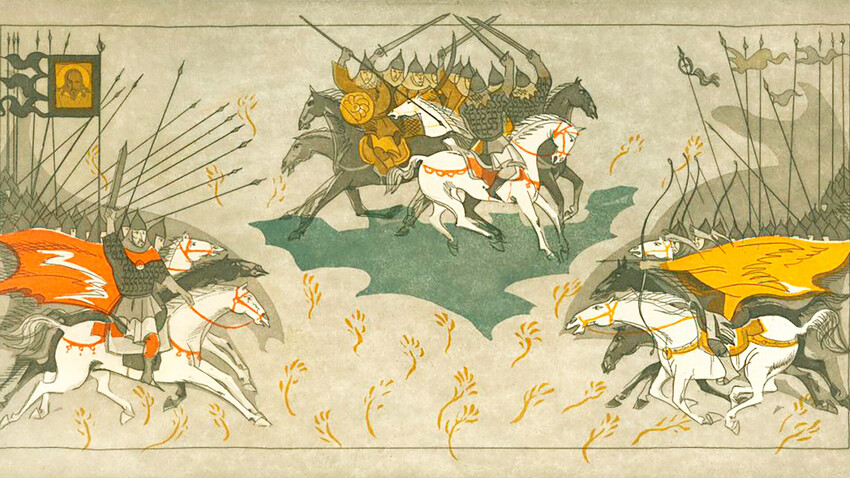
The Kulikovo Battle, 1978-1979, Aleksey Shmarinov
State Museum-Reserve “Kulikovo Field”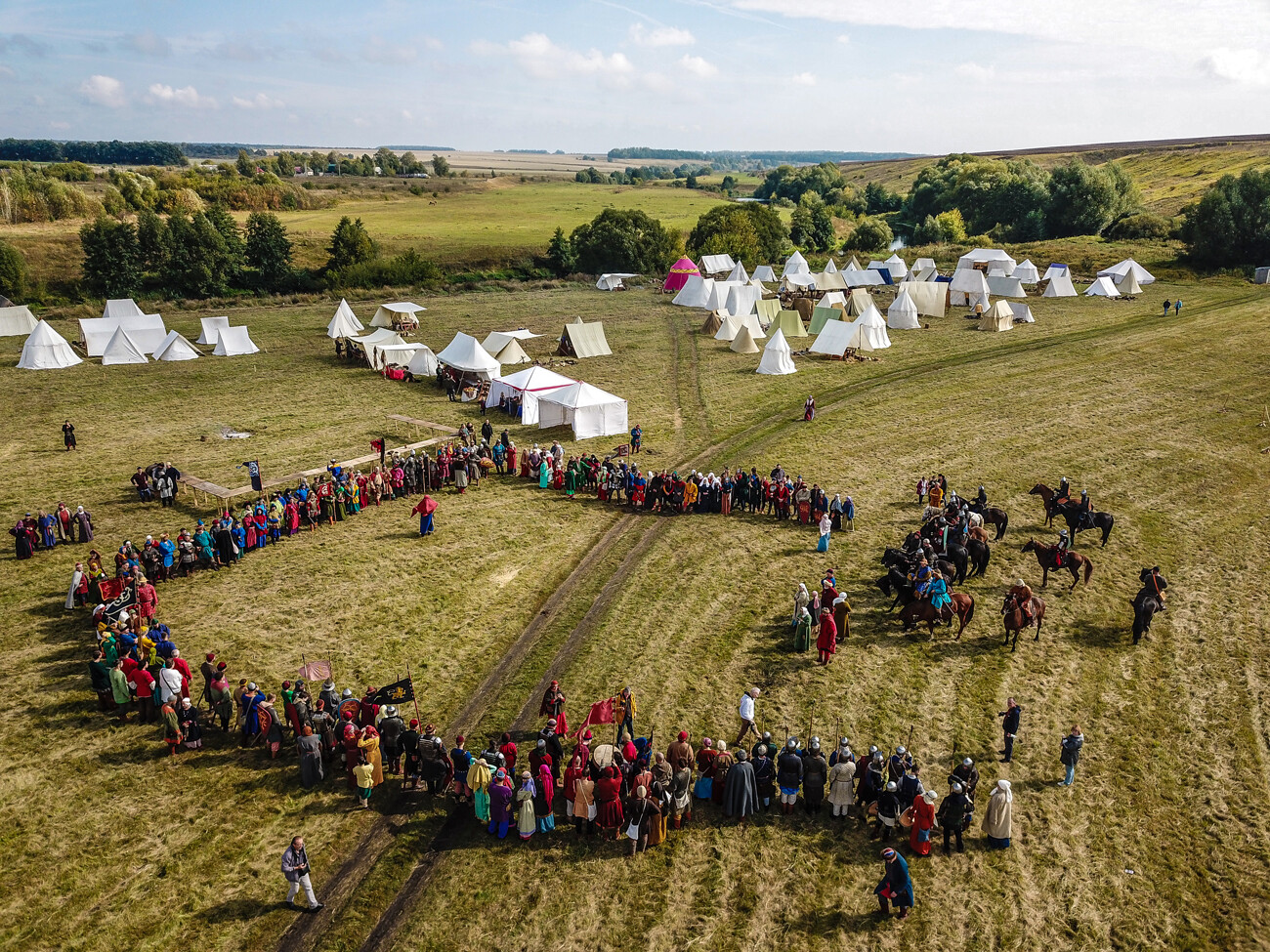
Participants of the military-historical festival "Kulikovo Field" in 2022 in the village of Monastyrshchino, Tula region
Alexey Kudenko/SputnikAccording to recent historical research, Golden Horde commander Mamai could draft approximately 70 to 90 thousand warriors in total against the Russians. But in the Battle of Kulikovo, he didn’t use all of them – two months after the battle, Mamai was to fight Khan Tokhtamysh and he needed an army for this battle, as well. By rough estimates of contemporary historians, Mamai really had 20-30 thousand soldiers in the Kulikovo battle.
To estimate the number of Russian troops is much more difficult, because all Russian sources overestimated this number. By estimations of historians Andrey Amelkin and Yuri Seleznev, Prince Dmitry Donskoy had no more than 30 thousand soldiers on the field.
Still, it was indeed one of the largest battles of the Middle Ages, comparable in numbers to the Battle of Tours (732) between the Franks and the Arabs or the Battle of Agincourt (1415) between England and France.
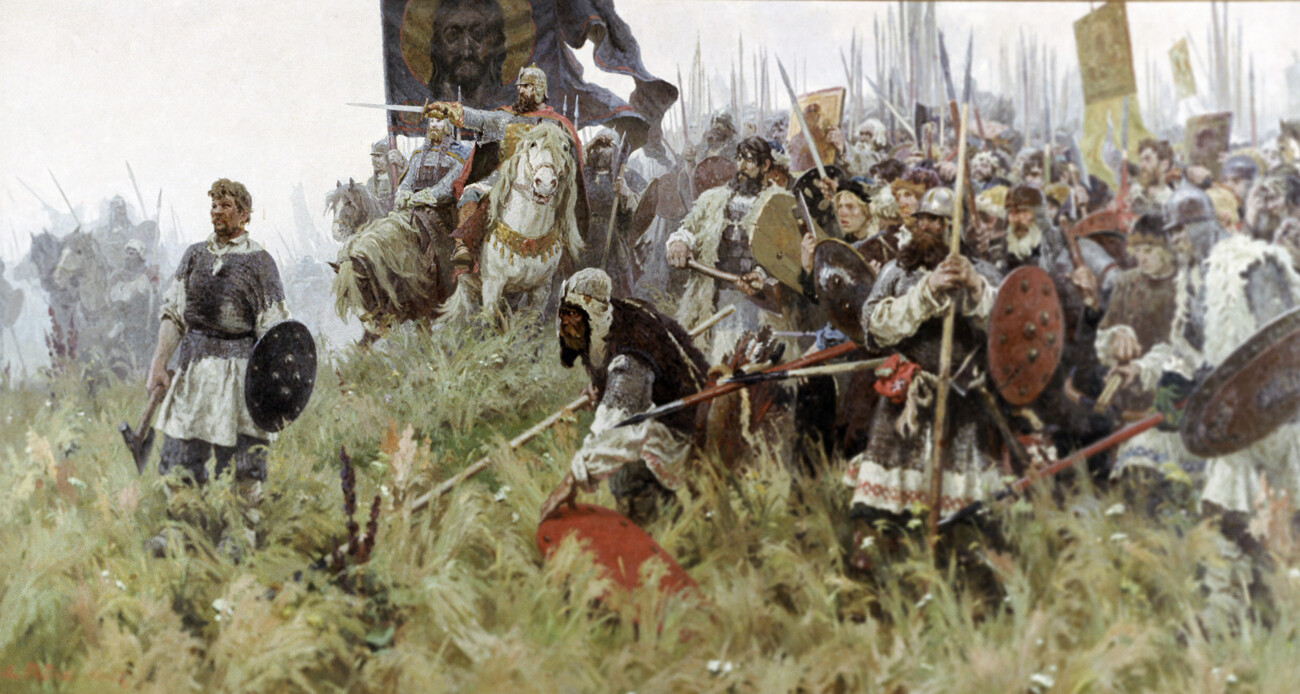
"Morning on the Kulikovo Field" by Alexander Bubnov, from the collection of the State Tretyakov Gallery
Pavel Balabanov/SputnikIn 1380, Dmitry Ivanovich (Donskoy), Grand Prince of Moscow and Vladimir, commanded the military power of his lands to fight the Golden Horde. The boyars, princes and members of princely druzhinaswho joined the regiments also had their squires and footmen drafted from the population of Russian towns and villages. In addition, volunteers joined the anti-Horde campaign of Dmitry Ivanovich and princes allied with him.
Defending the Russian land, people who had never fought before stood up side by side with professional warriors. This is confirmed by the chronicle: "Many Muscovites who had not been in battle before, having seen the multitude of the Tatar army, were frightened and despaired of their lives."

The Khan's army, 1979-1980, Alexei Shmarinov
State Museum Reserve "Kulikovo Field"Historical sources mention ‘fryagi’ (‘Italians’ in Old Russian) among Mamai’s troops. How did they get there? After the Byzantine Empire was crushed by the crusaders in 1204, many Italian trading colonies appeared on the shores of the Black Sea. The Italians were known in Europe for their military skills and Mamai could hire their infantry armed with spears, which the chronicle describes: "And so they stood up, putting their spears <…> each on the shoulders of the one in front of him, the front [spears] shorter, the back [spears] longer." However, it is not clear whether the ‘fryagi’ actually took part in the battle. Perhaps they were guarding Mamai's field headquarters.
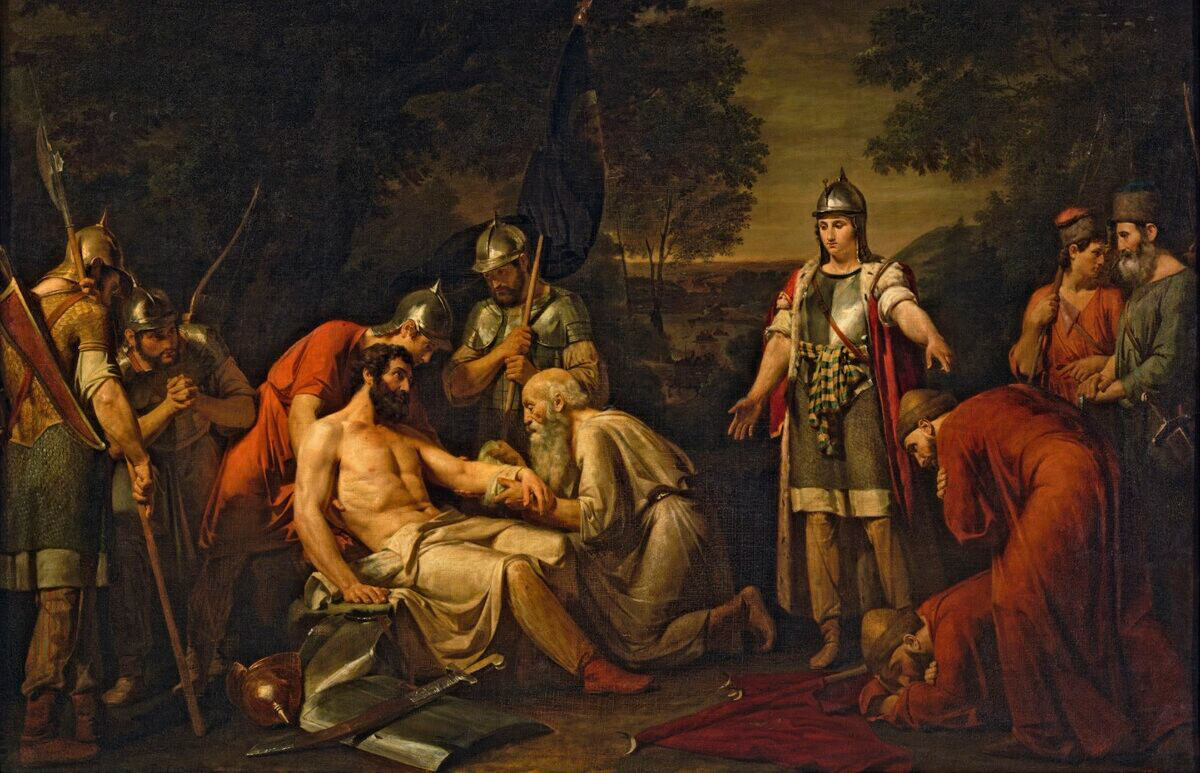
"Dmitry Donskoy at the Battle of Kulikovo" by Vasily Sazonov, 1824
Russian MuseumGrand Prince Dmitry Ivanovich rushed into battle among the first attacking regiments. Very soon, he was wounded and thrown off his horse. The soldiers who defended him were quickly killed by the enemy and the prince himself received many blows to the stomach and chest, but he was saved by his armor and chainmail. Prince Dmitry Ivanovich managed to get out of the hand-to-hand fight, but he could not ride a horse because of his wounds.
After the battle, Prince Vladimir Andreyevich Serpukhovsky, a cousin of Dmitry Ivanovich, could not find the wounded prince for a long time. He was discovered by two soldiers from Kostroma – the prince was lying under a broken birch tree.
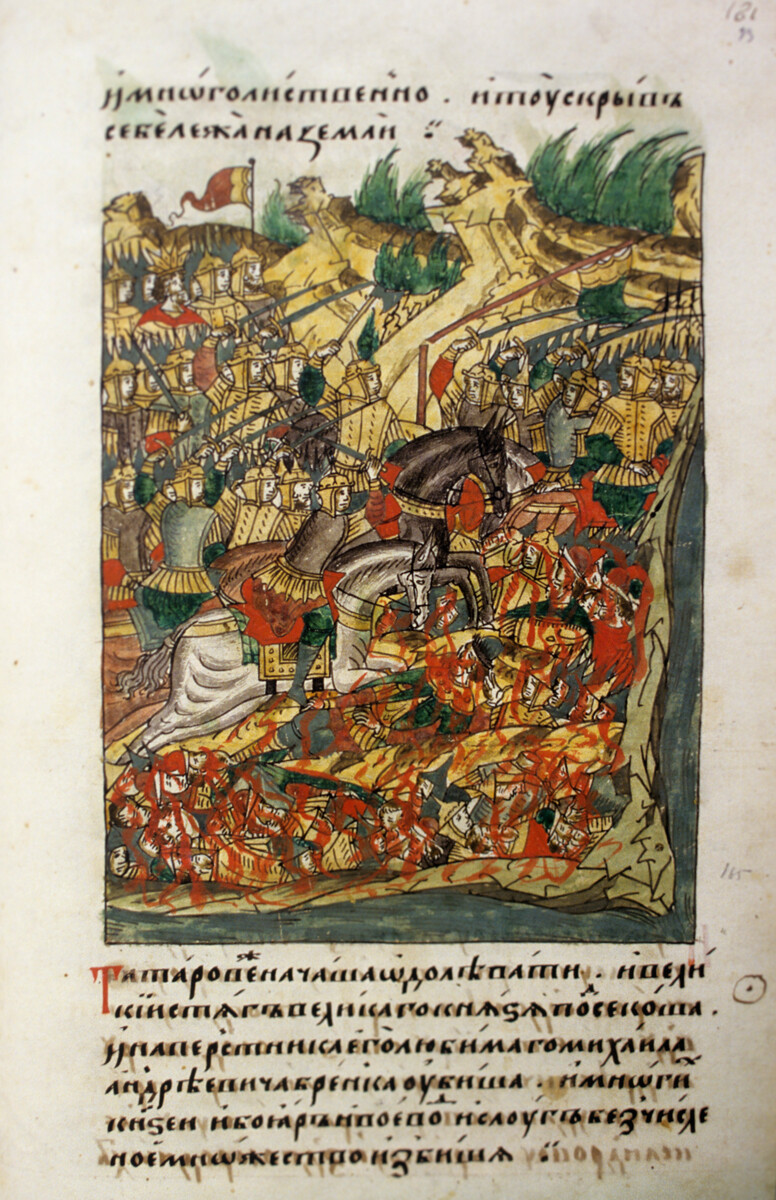
The Battle of Kulikovo in the Russian Illustrated Chronicle of the 16th century
Rudolf Kucherov/SputnikAt the time of the Battle of Kulikovo, the Russians had been under the Mongol-Tatar rule for 140 years and many princes had participated in the Golden Horde’s military campaigns. When the Russians lined up on the Kulikovo field, they adopted a five-part formation: a large regiment, regiments of the right and left hands, advanced and guard regiments. Mamai’s army probably had a similar five-part or three-part formation. Russians favorably used the fact that the Horde regiments attacked between two rivers – the Lower Dubnyak and Smolka, which flowed then on to the Kulikovo field. Because of this, the Horde army could not deploy fully along the entire front, interfering with itself.
However, the outcome of the battle was decided by the "secret" Russian ambush regiment of Prince Vladimir Andreyevich Serpukhovsky, hidden in the forest. The ambush regiment entered the battle at a decisive and unexpected moment for the Mongol-Tatars, who then fled, chased by the Russian cavalry.
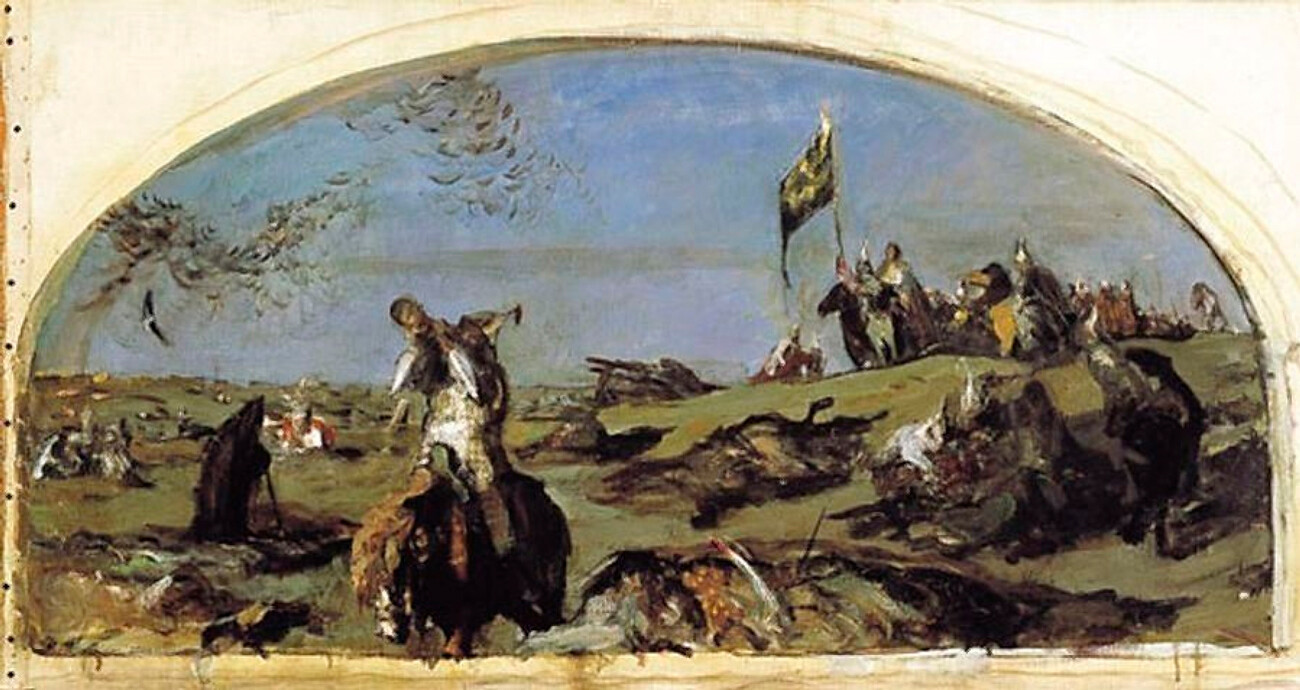
"After the Battle of Kulikovo," a sketch by Valentin Serov, 1895
State Historical MuseumWhen, in the 13th century, the Mongol-Tatars came to Russia, they defeated the Russians in battles also thanks to their tactical methods and formation. One hundred and fifty years after the invasion, having endured many battles and clashes with the Horde, the Russians learned from their own mistakes and successfully used the techniques against their invaders.
Dear readers,
Our website and social media accounts are under threat of being restricted or banned, due to the current circumstances. So, to keep up with our latest content, simply do the following:
If using any of Russia Beyond's content, partly or in full, always provide an active hyperlink to the original material.
Subscribe
to our newsletter!
Get the week's best stories straight to your inbox